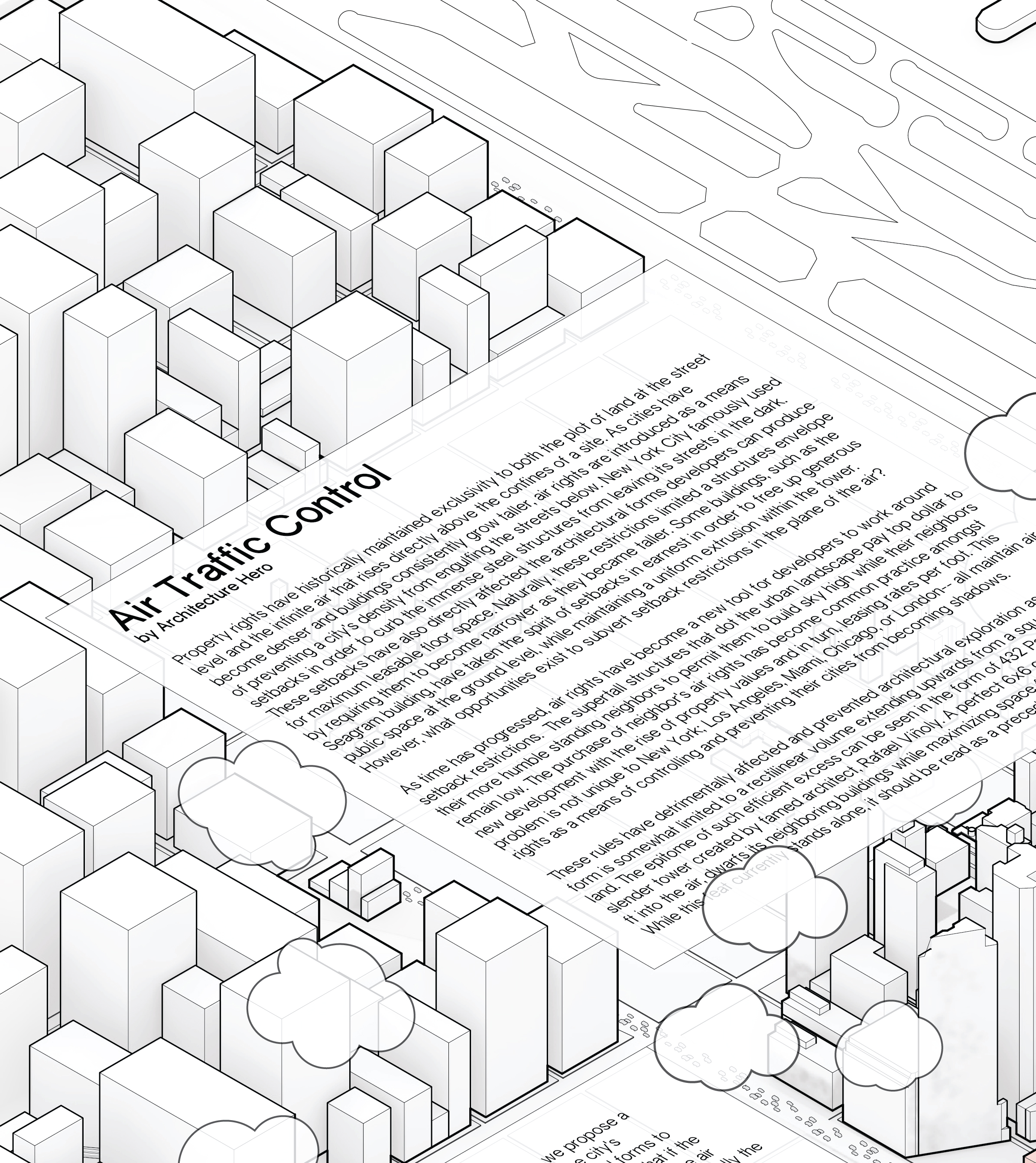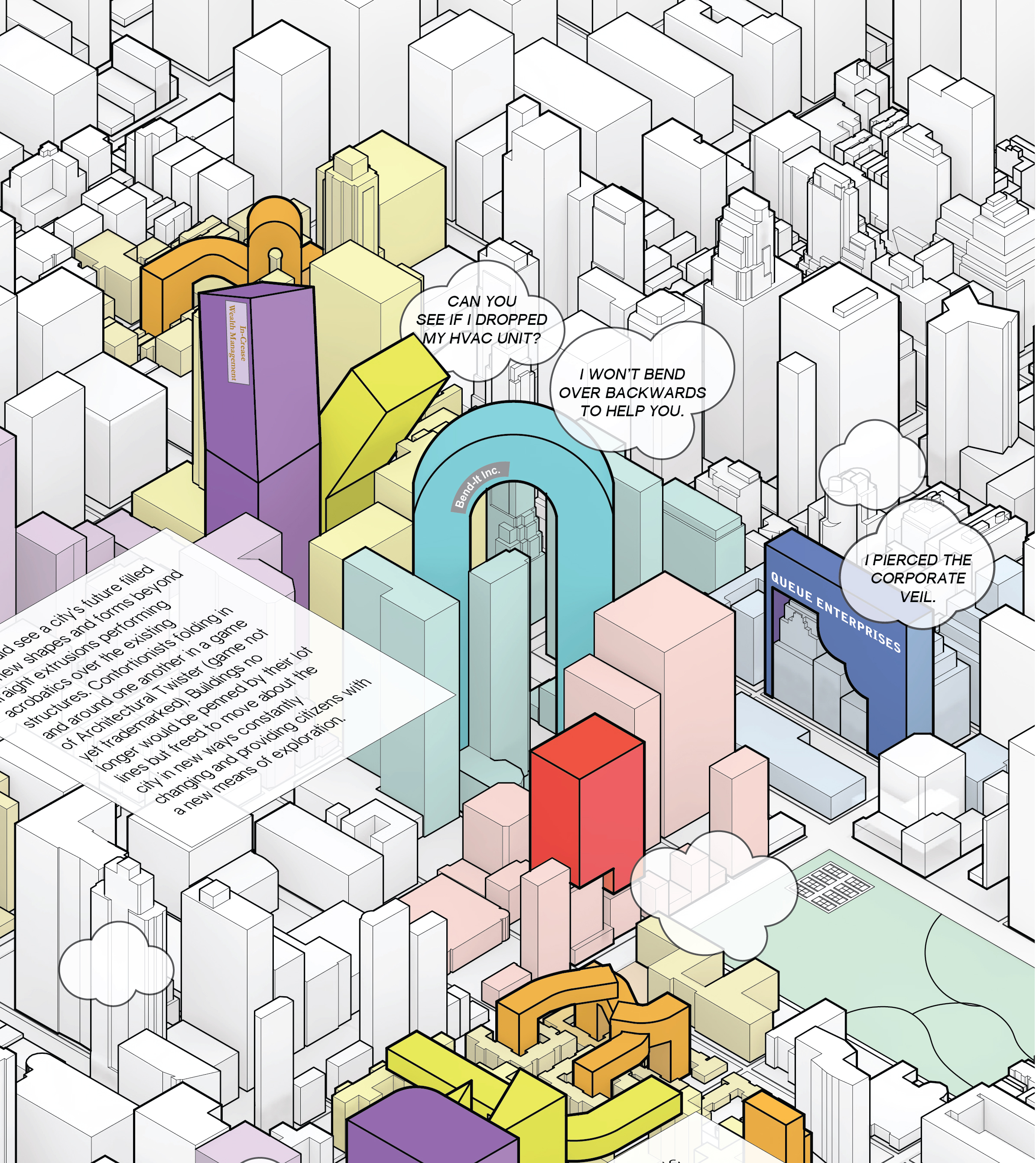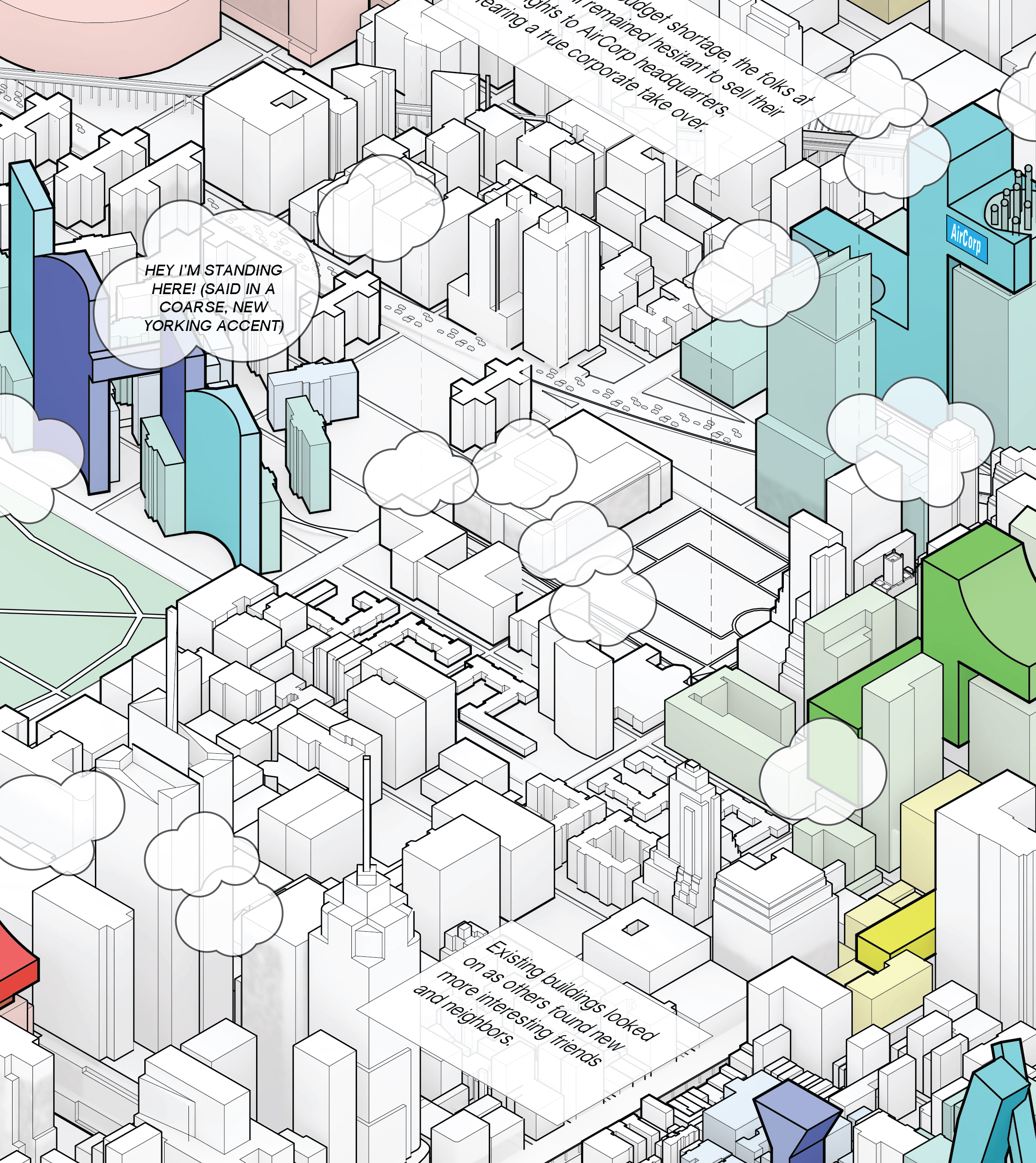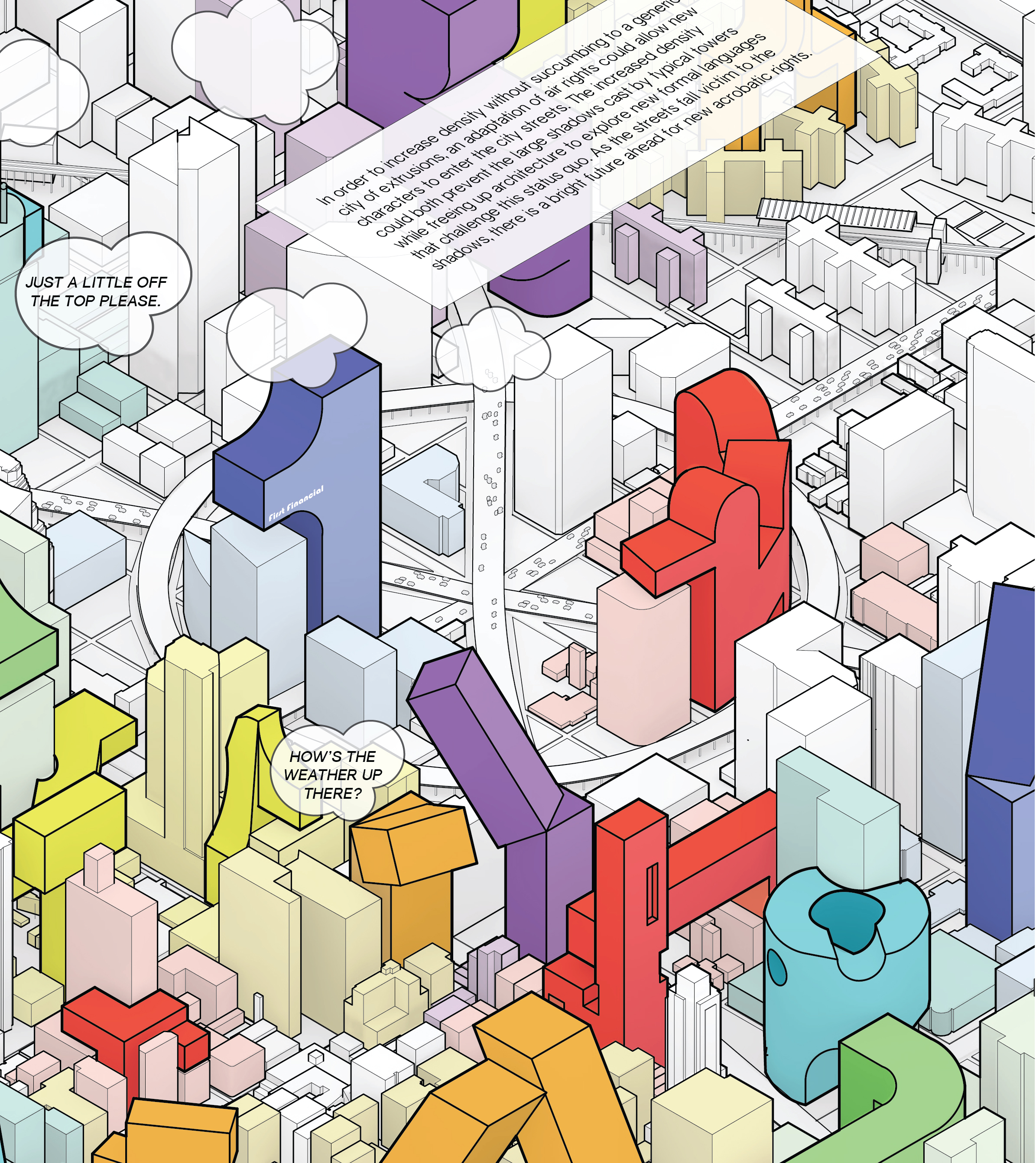Air Traffic Control
Architecture Hero
Property rights have historically maintained exclusivity to both the plot of land at the street level and the infinite air that rises directly above the confines of a site. As cities became denser and buildings grew taller, air rights have been introduced as a means in preventing a city’s density from engulfing the streets below. New York City famously used setbacks in order to curb the immense steel structures from leaving its streets in the dark. These setbacks have also directly affected the architectural forms developers can produce for maximum leasable floor space. Naturally, these restrictions limited a structures envelope by requiring them to become narrower as they became taller. Some buildings, such as the Seagram building, have taken the spirit of setbacks in earnest in order to free up generous public space at the ground level, while maintaining a uniform extrusion within the tower. However, what opportunities exist to subvert setback restrictions in the plane of the air?
As time has progressed, air rights have become a new tool for developers to work around setback restrictions. The supertall structures that dot the urban landscape pay top dollar to their more humble standing neighbors to permit them to build sky high while their neighbors remain low. The purchase of neighbor's air rights has become common practice amongst new development with the rise of property values and in turn, leasing rates per foot. This problem is not unique to New York; Los Angeles, Miami, Chicago, or London-- all maintain air rights as a means of controlling and preventing their cities from becoming shadows.
These rules have detrimentally affected and prevented architectural exploration as building form is somewhat limited to a rectilinear volume extending upwards from a square plot of land. The epitome of such efficient excess can be seen in the form of 432 Park Avenue, a slender tower created by famed architect, Rafael Viñoly. A perfect 6x6 grid, extruded 1,300 ft into the air, dwarfs its neighboring buildings while maximizing space for leasable condos. While this feat currently stands alone, it should be read as a precedent for more to follow.
In order to escape this reality of plain extrusion, we propose a change to the idea of "air rights" for the future of the city's development. Air rights that provide new architectural forms to emerge and instigate experimentation and innovation. What if the purchasing of air rights no longer pertained specifically to the air above one’s own lot, allowing one to build taller, but rather literally the purchase of a portion of the volume of air extending above an existing structure. Buildings could bend and warp over their neighbors to maximize more "valuable" space higher up. Or even connect two disconnected sites through the air.
What new characters could be introduced to the city’s framework? How could the architect’s imagination be freed to explore this new landscape? One could see a city's future filled with new shapes and forms beyond straight extrusions performing acrobatics over the existing structures. Contortionists folding in and around one another in a game of Architectural Twister (game not yet trademarked). Buildings no longer would be penned by their lot lines but freed to move about the city in new ways constantly changing and providing citizens with a new means of exploration.
In order to increase density without succumbing to a generic city of extrusions, an adaptation of air rights could allow new characters to enter the city streets. The increased density could both prevent the large shadows cast by typical towers while freeing up architecture to explore new formal languages that challenge this status quo. As the streets fall victim to the shadows, there is a bright future ahead for new acrobatic rights.






